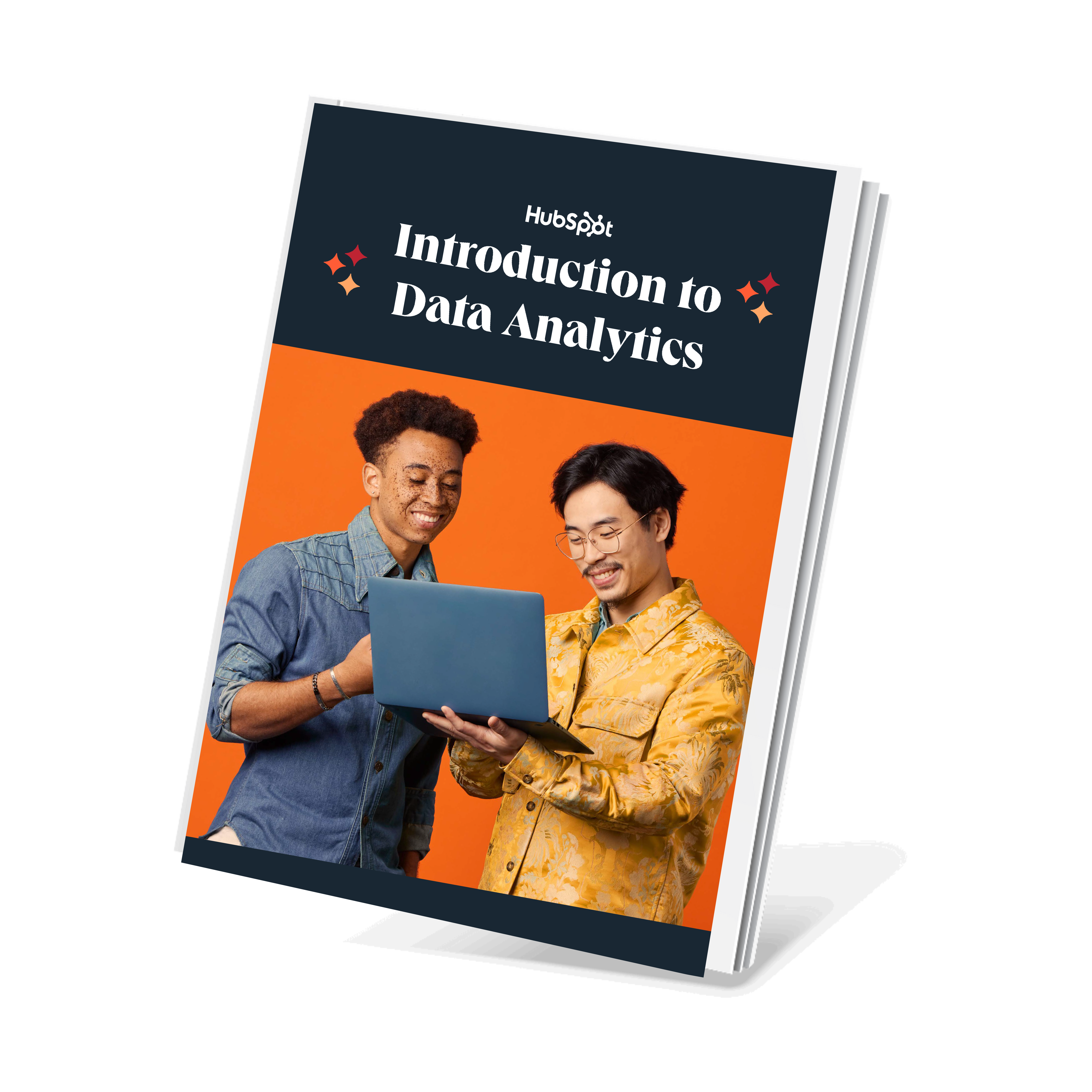Between shifts in technology, the economy, and consumer behavior, 2024 has brought marketers a new level of uncertainty. I’m right there with you, and I’ve bought stock in Pepto Bismal.
So when I got the chance to chat with Christophe Combette, a director of product management at Google, I wanted to know what there is to be excited about in marketing.
His surprising answer? Data privacy and first-party data.
I know, I know. Mentioning those things to marketers right now is like kicking a hornet’s nest. Core updates. iOS changes. GDPR and CCPA. The unknown future of 3rd-party cookies. It’s like a wild, marketing-themed cover of that one Billy Joel song.
But Combette shared how these changes are making marketing better for consumers AND marketers alike — if you start soon and play your cards thoughtfully.
And guess what? I’ve got some data-backed tips on how to do just that.
Below, you’ll learn Combette’s perspective on how first-party data will help you crush your marketing goals while earning your customers’ trust by preserving their privacy. But first, let’s jump back to what first-party data even means.
What is first-party data?
First-party data is information given to you by, or gathered with consent from, your audience—including customers, visitors, subscribers, or followers. Think of things like loyalty program applications, newsletter signups, or form fills.
“First-party data is the data your customers are knowingly sharing with your business,” Combette explained.
When I hear from marketers that haven’t tried a first-party approach, it’s usually because they don’t truly know what it is. And, consequently, they worry that they can’t leverage it for the kinds of strategies they’re used to.
Close your eyes and imagine building a high-performance campaign using all of the following, while still respecting your customers’ consent and privacy:
- Demographics
- Firmographics
- Website behavior
- App behavior
- Social media engagement
- Purchase history
- Feedback and survey insights
- Customer service interactions
- Loyalty and rewards program data
- Email engagement
- Etc.
Chances are, you’ve already got some good ideas in mind (you rockstar, you), and it wouldn’t take that much to get started.
With that data you could build a lookalike audience, run a re-engagement email, or create all sorts of clever segmentation or personalization. Since it’s all consentfully given, it respects your audience’s privacy. And since it comes from the source, you know it’s accurate.
And that isn’t even close to an exhaustive list.
(Side note: You’ll sometimes see a distinction made where data you gather is considered first-party, while data you’re given by customers is called “zero-party data.” To be honest, I find little value in separating the two. You should be using both and you’ll be combining them anyway.)
“You have this wealth of insights from your customers that’s aligned to your business outcomes,” Combette said. “And that combination together is one of the most powerful constructs.”
Let’s take a look at just how powerful.

An Introduction to Data Analytics
Unlock the power of data and transform your business with HubSpot's comprehensive guide to data analytics.
- Fundamentals of data analytics
- Different types of data analytics
- Data visualization
- And more!
Download Free
All fields are required.

4 Ways First-Party Data is Helping Marketers
When I referred to switching to first-party data as a challenge, Combette took a moment to gently correct me.
“I wouldn’t necessarily call it a challenge as much as it is a big shift in the industry,” He told me, adding with a grin, “Which comes with a big opportunity, and a competitive differentiator, if you nail it.”
And, in truth, that shift is more one of focus, rather than application. First-party data has been there all along, and many marketing teams are already using it to drive deep growth.
What’s shifting is that more businesses are getting on board.

“Some marketers have been very successful in building marketing strategies based on third-party identifiers, and first-party data is a shift for them,” he goes on. “But it’s an important one because you can derive a lot more insights from it.”
And chances are, you’ve already got the ingredients. All you need to unlock their insights are the right tools and a plan.
“It’s the data you’re already using to drive the business outcomes you want.”
Whether you’re switching strategies, or just getting started for the first time, here are some data-backed reasons to believe:
1. First-party data is more accurate and more relevant.
Marketers using first-party data are 93% more likely to say their team is outperforming their goals in 2024 than those who don’t use it, according to HubSpot research.
And 77% of marketers who use first-party data say it results in more personalized content and performs better than external data.
Combette counts off some use cases that really illustrate the value:
“You want to drive new customer acquisition? That information is one you can only see from first-party insights. You want to optimize towards lifetime value? It requires deep analysis of your first-party data. It’s not something you could do with third-party identifiers.”
2. First-party data fills in the gaps most marketers have.
It turns out most marketers are missing critical information on their audience—just 42% know their basic demographic information, and even fewer know their shopping habits, purchase history, and which channels they consume content/media on.

First-party data like that can be used to gain high-quality insights and deliver a highly personalized experience to your customers.
And since it's collected directly from your customers, first-party data is highly accurate and unique to your company while still respecting privacy.
But for customers to give you their personal information, they need to trust you first.
3. First-party data fosters trust from consumers.
It’s no secret that folks are tired of seeing ads on every platform for something they casually looked up once.
Our Consumer Trends survey shows that close to half (45%) of consumers distrust companies with their website behavior and cookie data.
Using first-party data can make consumers feel safer sharing their personal information because it’s gathered with both their knowledge and consent — and used only by those they’ve shared it with.
Leveraging first-party sources will allow marketers to get higher-quality data while respecting consumers’ privacy, mutually benefiting both parties.
4. Marketing budgets are increasing to accommodate data privacy changes.
Both government regulators and consumers are demanding data privacy changes, and marketers are getting tossed around in the waves.
Luckily, execs are paying attention and giving marketers the budget they need to explore alternative measuring and advertising solutions.

Almost half (48%) of marketers say their budget has changed this year to compensate for data privacy, with 71% reporting an increase in their marketing budget.
But, to paraphrase the wise old sage, Uncle Ben: With great budget comes great responsibility. And sometimes, a few challenges.
The Challenges of Using First-Party Data
“Building and deploying your data across environments has not always been easy or seamless,” Combette admits.
Oftentimes, marketers have to gather data with one set of tools, analyze it with another set, and then actually use those insights in yet a third set of tools.
So perhaps it's no surprise that our research shows:
- 60% of marketers say gathering and tracking visitor data is becoming more difficult.
- Nearly half (48%) of marketers cite increased data privacy changes/regulations as the biggest challenge to understanding their audience.
- On the flip side, only half (56%) of marketers say the data they have on their audience is high quality.
- Just 16% have all the data they need to reach their audience.
- Meanwhile, 47% report that consumers are less trusting with their personal data.
So, while marketers are looking to gather high-quality data, their audiences are less likely to give it. And even when marketers find it, it lives in 10 places, and they’re not sure what to do with it.

Thankfully, we’ve got a roadmap — laid out by Christophe Combette and our own data — for how to make gathering and utilizing first-party data fast, powerful, and easy-peasy. (Lemon squeazy optional, but encouraged.)
7 Steps to Build a Privacy-Focused First-Party Data Strategy
1. Start by asking what data you actually need.
Don’t scroll past this. This isn’t filler. This is the most important step.
If you’re familiar with using third-party identifiers to guide your marketing, you know you don’t just gather them in the hopes that you’ll somehow know what to do later. You had a use case in mind when you started.
Maybe it was targeted social ads. Maybe it was cross-platform tracking. But the data you collected was informed by a goal.
Why should first-party data be any different just because it’s freely available?
In fact, if you gather all of the first-party data you can without regard for use case, you’re more likely to overstep on privacy issues. And you’ll end up with a data puke that helps nobody.
Instead, start with your business outcomes in mind, and work backward to what data you’ll actually need.
2. Audit your data sources.
Now that you know what data you need, it’s time to consider where it’s coming from.
“We’re all consumers ourselves. We use the app, the web, we call, we text. I do online chat sometimes,” Combette says. “We have this wealth of online touchpoints.”
And each touchpoint represents something unique about your prospect or customer.
“So the key is to have a tech stack that has a 360-view of the customer.”
That means gathering data from multiple high-quality sources. Here are the touchpoints that marketers in our survey agree are the highest quality sources of first-party data:
- Customers registering/creating accounts with your company (signing up for content, discounts, newsletters, etc.) (36%)
- Information gathered during the purchasing process (28%)
- Customer interactions with customer support channels (20%)
- Social media interactions (likes, shares, etc.) (16%)
You’ll notice the highest-quality sources tend to come with the highest level of buy-in. That means you’ve got some convincing to do. Which brings me to …
3. Consider the value you’re offering in return for data.
“One of the rarest commodities out there for any of us is time. We’re constantly trying to get stuff done, and that comes with a lot of touchpoints, too,” Combette says.
Most marketers will see “touchpoints” as the subject of that sentence, and start thinking about the value they can extract. But value isn’t a one-way street. If your content isn’t worth your audiences’ limited time, then it isn’t worth their data, and those touchpoints will dry up quickly.
At HubSpot, we find a lot of success with templates, calculators, and free tools. Other businesses may choose whitepapers or webinars. For a B2C business, it may look like coupons and giveaways.
The exact offer will depend on what your particular audience values, but it absolutely must offer value.
Here’s what marketers in our survey reported as the most effective ways to incentivize customers to share data:
- Offering discounts/promotions/loyalty programs (40%)
- Creating content on social media (e.g. posts, videos, giveaways) (28%)
- Creating content on your website (e.g. blog posts) (18%)
- Creating an email newsletter (12%)
4. Know where your data goes.
So now you know what data you need, you’ve identified high-quality sources, and you’ve convinced your customers to share it. Great! Now where do you put it?
In a CRM? A CDP? GGT? WQE? If you don’t know which of those acronyms I just made up on the spot, then it’s time to brush up on the different types of data platform software.
The type of software you need will depend heavily on your business model, but every business needs a single source of truth.
Our research shows that marketers with a single source of truth are 94% more likely to say their team is outperforming their goals.
Yet, only 60% of marketers have a single source of truth for all marketing data.
5. Map your customer journey.
Collecting the data is point A, and your business goal is point B. Now the trick is: How do you get your customers from point A to point B?
You just run an ad, and then they buy, right? If you build it, they will come? Unfortunately, it’s rarely that simple.
“All of our customer journeys are becoming more complicated and fragmented. We see it on our end, too, so it’s not the purchase channel,” Combette shares. “Consumers are using five or more online sources before they buy. That could be a search, a video, going to Google maps.”
And each of those steps is a decision point where your customers could choose you… or someone else.
Only 16% of marketers have full visibility into their customer journey, yet those who do are 200% more likely to say their team is outperforming their goals.
So, if you’re looking for the competitive differentiator that Combette mentioned, you just found it. Take time to learn about customer journey analytics.
6. Connect your data directly to that customer journey.
One of the biggest challenges with first-party data is using it to thoughtfully measure those five or more touchpoints Combette mentioned.
If, for example, you take an audience you built in your CRM and manually rebuild it in Google Ads, you’re going to lose a lot of time to busywork. (Time that would be more productive, say, watching paint dry.) And you’ll do it every time that audience is updated.
And that’s just one channel.
Instead, look for software solutions that automate the integration with your marketing tools.
Pro tip: Marketing Hub+ users can automatically integrate their smart CRM data straight into Google Ads Data Manager.
That means you can instantly find your audience on Search, Shopping, Youtube, Display, and more. And it works in the other direction, too, so you can instantly sync new leads back into your CRM.
And since the sync respects user preference, your advertising is automatically both privacy-compliant and consent-driven.
I took a moment to geek out with Combette about the integration, because how often do you get a chance to geek out with a Google exec?
“Our aim was to make the integration easy,” he says. “Easy to build first-party data in HubSpot and put it to use in Google Ads. Advertisers don’t have to worry about moving data and can focus on the business outcomes and strategies they want to deploy.”
And if I can humblebrag for a moment, marketers who use HubSpot and Google Ads together see an average increase of 31% more leads.
“And those leads are also cheaper. We see a 12% decrease in cost per lead within the first 90 days of linking those two products,” he adds.
7. Use that data more than once.
To make your data truly work for you, you’ll want to apply it to as many of your marketing efforts as you can.
The trade-off for that has historically been that it requires a lot of repeat labor. (Hellooooo, building the same audiences in Facebook, LinkedIn, Display, etc., etc.)
No matter what tools you use to gather or store your data, putting it to work is where the new Google Ads Data Manager really shines.
“We want to make sure advertisers can bring in data once, and power a number of downstream use cases,” Combette says.
Through one point-and-click interface, you’re able to leverage a number of Google Ads tools and features, such as Enhanced Conversions and Customer Match—with even more coming down the pipeline.
And if you’re not familiar with those tools, Data Manager will actually walk you through setting up workflows.
“Just through 5 or 6 clicks, you can start bringing in that data for use cases we’ve guided you through,” he says. “We built Data Manager for busy marketers that want to rely on first-party data but aren’t necessarily experts in data. They don’t have a developer to write custom code.”
Then Combette smiled excitedly as he gave me a sneak peek of something Google was just getting ready to launch. A brand-new feature that ensures privacy is at the very core of the marketing process:
“We’re building confidential matching, which uses special software and hardware known as confidential computing, which enables advertisers to control their data before it even hits any Google environment. This is the first use of the technology in our Ads products, and we plan to bring this privacy-enhancing tech to more products over time.”
Which translates to more data in more use cases without worries about overstepping privacy boundaries.
What’s Next for First-Party Data
Adapting to first-party data can be challenging because regulations and public opinion around data privacy are actively developing.
But if you follow these steps, you’ll be ahead of the curve on nailing a first-party data strategy that crushes your goals and delights your customers.
The most important thing marketers can do is to get started with first-party data now, and explore new marketing solutions so they are ready to adapt their data strategy when the time comes.


![Download Now: The State of Data-Driven Advertising [Free Report]](https://no-cache.hubspot.com/cta/default/53/0f5e1fe2-6c72-4640-a895-5ce7f44ab229.png)









